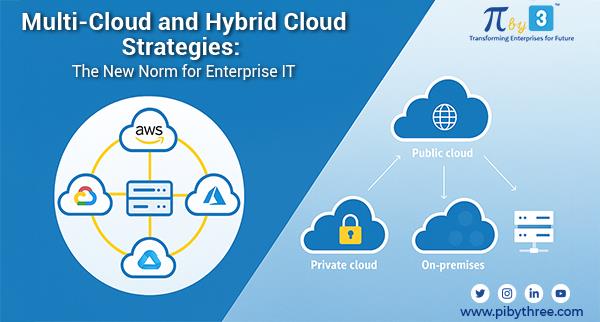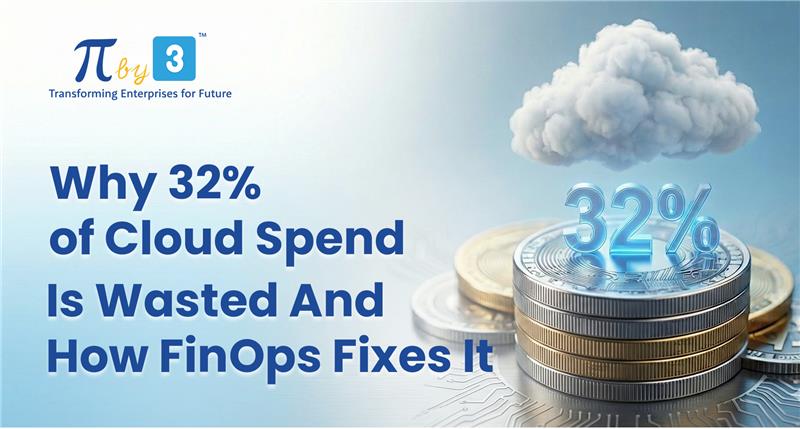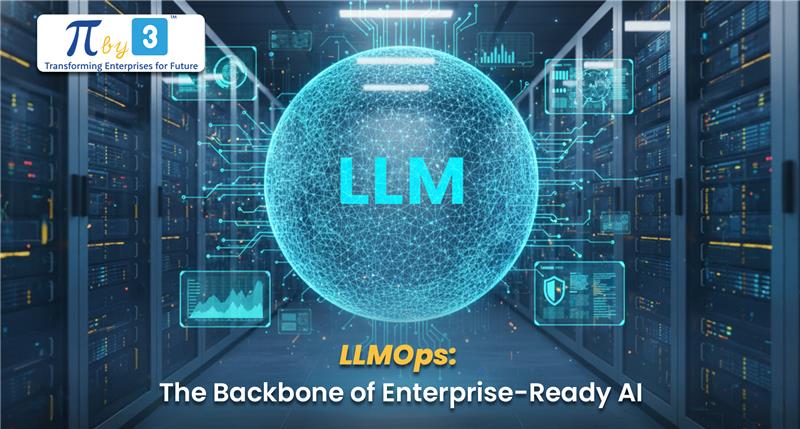The enterprise cloud transformation landscape has reached a tipping point. While 94% of enterprises now use cloud services according to Flexera's 2024 State of the Cloud Report, many struggle to unlock cloud's full potential. The question is no longer whether to move to the cloud, but how to transform intelligently, combining strategic architecture, automation, security and AI to drive measurable business outcomes.
At PibyThree, we have seen firsthand how the right approach to cloud transformation can deliver 20-40% cost savings, 50% faster time-to-market and 60% reduction in operational overhead. But achieving these results requires more than migration, it demands strategic evolution.
The Cloud Imperative: Four Critical Drivers
1. Cost Optimization Beyond Migration Moving from capital-intensive infrastructure to pay-as-you-grow models provides immediate relief but true optimization comes from intelligent resource allocation, real-time cost visibility and automated scaling based on actual demand patterns.
2. Automation-First Operations Organizations embedding Infrastructure-as-Code (IaC), policy-as-code, and self-healing systems see 3x faster deployments and 60% less manual intervention. Automation isn't just about efficiency; it's about creating systems that improve themselves.
3. Security by Design Cloud Security Posture Management (CSPM) and Identity & Access Management (IAM) with zero-trust principles turn security from a bottleneck into an enabler. Organizations with automated security compliance report 40% fewer compliance risks and continuous audit-readiness.
4. AI-Native Capabilities Cloud platforms serve as the foundation for generative AI integration, LLM-powered observability and real-time analytics that transform decision-making from reactive to predictive.
Common Transformation Roadblocks
Despite cloud's proven benefits, enterprises face persistent challenges:
- Legacy Infrastructure: Monolithic systems resist modernization, creating technical debt that grows costlier over time
- Skills Gap: Cloud-native, AI-fluent talent remains scarce, with 68% of organizations citing skills shortages as their primary cloud challenge
- Governance Complexity: Navigating regulations like GDPR and HIPAA while maintaining operational agility requires specialized expertise
- Execution Risk: Without clear frameworks, 70% of cloud projects exceed budgets while delivering limited business value
The cost of inaction? Higher operational expenses, mounting technical debt and competitive disadvantage in an increasingly AI-driven market.
PibyThree's Integrated Transformation Framework
Our approach centres on four interconnected pillars that ensure business impact from day one:
Strategic Architecture for Resilient Growth
We design cloud-native blueprints optimized for hybrid, multi-cloud environments with vendor-agnostic infrastructure that prevents lock-in while maximizing each platform's strengths. Our microservices and event-driven architectures enable modular scalability, while security-by-design principles embed protection at every layer.
Key integrations span AWS, Azure, Snowflake, and Red Hat ecosystems, ensuring seamless operations across diverse technology stacks.
Automation-Led Modernization
Cloud transformation without automation creates technical debt. Our automation suite - including π Recon, RoboPod and DataMig - streamlines the entire transformation journey:
- Intelligent Discovery: Automated codebase analysis and dependency mapping eliminate guesswork
- Accelerated Provisioning: IaC templates and CI/CD pipelines reduce infrastructure deployment time by 75%
- Self-Healing Operations: Intent-based automation and auto-remediation minimize downtime
Real Impact: Clients report 60% reduction in manual intervention and 3x improvement in deployment velocity.
Zero-Trust Security at Cloud Speed
Our security model adapts to dynamic, distributed cloud environments through continuous monitoring and automated response:
- Real-Time Risk Management: CSPM tools provide instant visibility into security postures across multi-cloud environments
- Context-Aware Access: IAM policies adjust automatically based on user behavior, location and risk profiles
- ML-Driven Threat Detection: Behavioral analytics identify anomalies before they become breaches
Security automation integrates directly into DevOps pipelines, enabling continuous compliance without sacrificing delivery speed.
Generative AI Integration Across Operations
AI transforms every phase of the cloud lifecycle:
Development & Operations: Automated code translation from legacy to cloud-native architectures, LLM-powered infrastructure scripting, and AI-driven observability that provides plain-language root cause analysis.
Governance & Optimization: Generative AI creates policies automatically, while predictive FinOps models forecast spending patterns and recommend optimizations before cost overruns occur.
Measured Results: AI integration reduces incident response time by 70% and improves developer productivity by 40%.
Measuring Success: Real-Time Business Value
Transformation success requires continuous measurement. Our SnowDash platform provides:
- Live TCO Tracking: Real-time visibility into total cost of ownership with predictive modeling
- Dynamic FinOps: Automated cost optimization recommendations based on usage patterns
- Innovation Metrics: Quantified impact of AI-enabled capabilities on business outcomes
Organizations using our measurement framework sustain 10-20% year-over-year cloud savings through continuous optimization.
Future-Ready: The Cloud + AI Convergence
The next wave of enterprise innovation combines cloud infrastructure with AI capabilities:
- Intelligent Observability: LLM-powered systems provide contextual diagnostics and automated resolutions, not just alerts
- Composable Infrastructure: Modular, plug-and-play architectures adapt instantly to changing business needs
- Sustainable Operations: AI-optimized workloads reduce carbon emissions by up to 30%, supporting ESG goals
Early adoption of AI-led observability positions organizations to capture share of the projected $70 billion market by 2030.
Building Competitive Advantage Through Transformation
Successful cloud transformation requires more than technology—it demands organizational evolution. Key success factors include:
- Continuous Learning: Upskilling teams through comprehensive training programs focused on cloud, security, automation, and AI
- Cultural Integration: Aligning development, security, and operations teams with shared tools and accountability
- Strategic Partnership: Working with experienced providers who understand both technical implementation and business outcomes
Transform With Purpose and Precision
Cloud transformation represents business reinvention, not just technological upgrade. Organizations that combine strategic architecture, intelligent automation, embedded security, and AI-first thinking create compounding returns in performance, resilience, and innovation.
At PibyThree, we don't just build cloud systems, we architect competitive advantages that scale with your ambitions.
Ready to lead in a cloud-first, AI-native world? Let's design your intelligent transformation strategy.






